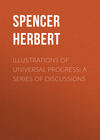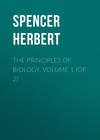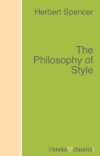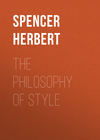Loe raamatut: «Illustrations of Universal Progress: A Series of Discussions», lehekülg 26
IX.
THE DEVELOPMENT HYPOTHESIS
In a debate upon the development hypothesis, lately narrated to me by a friend, one of the disputants was described as arguing, that as, in all our experience, we know no such phenomenon as transmutation of species, it is unphilosophical to assume that transmutation of species ever takes place. Had I been present, I think that, passing over his assertion, which is open to criticism, I should have replied that, as in all our experience we have never known a species created, it was, by his own showing, unphilosophical to assume that any species ever had been created.
Those who cavalierly reject the Theory of Evolution, as not adequately supported by facts, seem quite to forget that their own theory is supported by no facts at all. Like the majority of men who are born to a given belief, they demand the most rigorous proof of any adverse belief, but assume that their own needs none. Here we find, scattered over the globe, vegetable and animal organisms numbering, of the one kind (according to Humboldt), some 320,000 species, and of the other, some 2,000,000 species (see Carpenter); and if to these we add the numbers of animal and vegetable species that have become extinct, we may safely estimate the number of species that have existed, and are existing, on the Earth, at not less than ten millions. Well, which is the most rational theory about these ten millions of species? Is it most likely that there have been ten millions of special creations? or is it most likely that by continual modifications, due to change of circumstances, ten millions of varieties have been produced, as varieties are being produced still?
Doubtless many will reply that they can more easily conceive ten millions of special creations to have taken place, than they can conceive that ten millions of varieties have arisen by successive modifications. All such, however, will find, on inquiry, that they are under an illusion. This is one of the many cases in which men do not really believe, but rather believe they believe. It is not that they can truly conceive ten millions of special creations to have taken place, but that they think they can do so. Careful introspection will show them that they have never yet realized to themselves the creation of even one species. If they have formed a definite conception of the process, let them tell us how a new species is constructed, and how it makes its appearance. Is it thrown down from the clouds? or must we hold to the notion that it struggles up out of the ground? Do its limbs and viscera rush together from all the points of the compass? or must we receive the old Hebrew idea, that God takes clay and moulds a new creature? If they say that a new creature is produced in none of these modes, which are too absurd to be believed; then they are required to describe the mode in which a new creature may be produced – a mode which does not seem absurd: and such a mode they will find that they neither have conceived nor can conceive.
Should the believers in special creations consider it unfair thus to call upon them to describe how special creations take place, I reply, that this is far less than they demand from the supporters of the Development Hypothesis. They are merely asked to point out a conceivable mode. On the other hand, they ask, not simply for a conceivable mode, but for the actual mode. They do not say – Show us how this may take place; but they say – Show us how this does take place. So far from its being unreasonable to put the above question, it would be reasonable to ask not only for a possible mode of special creation, but for an ascertained mode; seeing that this is no greater a demand than they make upon their opponents.
And here we may perceive how much more defensible the new doctrine is than the old one. Even could the supporters of the Development Hypothesis merely show that the origination of species by the process of modification is conceivable, they would be in a better position than their opponents. But they can do much more than this. They can show that the process of modification has effected, and is effecting, decided changes in all organisms subject to modifying influences. Though, from the impossibility of getting at a sufficiency of facts, they are unable to trace the many phases through which any existing species has passed in arriving at its present form, or to identify the influences which caused the successive modifications; yet, they can show that any existing species – animal or vegetable – when placed under conditions different from its previous ones, immediately begins to undergo certain changes of structure fitting it for the new conditions. They can show that in successive generations these changes continue, until ultimately the new conditions become the natural ones. They can show that in cultivated plants, in domesticated animals, and in the several races of men, such alterations have taken place. They can show that the degrees of difference so produced are often, as in dogs, greater than those on which distinctions of species are in other cases founded. They can show that it is a matter of dispute whether some of these modified forms are varieties or separate species. They can show, too, that the changes daily taking place in ourselves – the facility that attends long practice, and the loss of aptitude that begins when practice ceases – the strengthening of passions habitually gratified, and the weakening of those habitually curbed – the development of every faculty, bodily, moral, or intellectual, according to the use made of it – are all explicable on this same principle. And thus they can show that throughout all organic nature there is at work a modifying influence of the kind they assign as the cause of these specific differences: an influence which, though slow in its action, does, in time, if the circumstances demand it, produce marked changes – an influence which, to all appearance, would produce in the millions of years, and under the great varieties of condition which geological records imply, any amount of change.
Which, then, is the most rational hypothesis? – that of special creations which has neither a fact to support it nor is even definitely conceivable; or that of modification, which is not only definitely conceivable, but is countenanced by the habitudes of every existing organism?
That by any series of changes a protozoon should ever become a mammal, seems to those who are not familiar with zoology, and who have not seen how clear becomes the relationship between the simplest and the most complex forms when intermediate forms are examined, a very grotesque notion. Habitually looking at things rather in their statical than in their dynamical aspect, they never realize the fact that, by small increments of modification, any amount of modification may in time be generated. That surprise which they feel on finding one whom they last saw as a boy, grown into a man, becomes incredulity when the degree of change is greater. Nevertheless, abundant instances are at hand of the mode in which we may pass to the most diverse forms, by insensible gradations. Arguing the matter some time since with a learned professor, I illustrated my position thus: – You admit that there is no apparent relationship between a circle and an hyperbola. The one is a finite curve; the other is an infinite one. All parts of the one are alike; of the other no two parts are alike. The one incloses a space; the other will not inclose a space though produced for ever. Yet opposite as are these curves in all their properties, they may be connected together by a series of intermediate curves, no one of which differs from the adjacent ones in any appreciable degree. Thus, if a cone be cut by a plane at right angles to its axis we get a circle. If, instead of being perfectly at right angles, the plane subtends with the axis an angle of 89° 59', we have an ellipse, which no human eye, even when aided by an accurate pair of compasses, can distinguish from a circle. Decreasing the angle minute by minute, the ellipse becomes first perceptibly eccentric, then manifestly so, and by and by acquires so immensely elongated a form, as to bear no recognisable resemblance to a circle. By continuing this process, the ellipse passes insensibly into a parabola; and ultimately, by still further diminishing the angle, into an hyperbola. Now here we have four different species of curve – circle, ellipse, parabola, and hyperbola – each having its peculiar properties and its separate equation, and the first and last of which are quite opposite in nature, connected together as members of one series, all producible by a single process of insensible modification.
But the blindness of those who think it absurd to suppose that complex organic forms may have arisen by successive modifications out of simple ones, becomes astonishing when we remember that complex organic forms are daily being thus produced. A tree differs from a seed immeasurably in every respect – in bulk, in structure, in colour, in form, in specific gravity, in chemical composition: differs so greatly that no visible resemblance of any kind can be pointed out between them. Yet is the one changed in the course of a few years into the other: changed so gradually, that at no moment can it be said – Now the seed ceases to be, and the tree exists. What can be more widely contrasted than a newly-born child and the small, semi-transparent, gelatinous spherule constituting the human ovum? The infant is so complex in structure that a cyclopædia is needed to describe its constituent parts. The germinal vesicle is so simple that it may be defined in a line. Nevertheless, a few months suffice to develop the one out of the other; and that, too, by a series of modifications so small, that were the embryo examined at successive minutes, even a microscope would with difficulty disclose any sensible changes. That the uneducated and the ill-educated should think the hypothesis that all races of beings, man inclusive, may in process of time have been evolved from the simplest monad, a ludicrous one, is not to be wondered at. But for the physiologist, who knows that every individual being is so evolved – who knows further, that in their earliest condition the germs of all plants and animals whatever are so similar, "that there is no appreciable distinction amongst them which would enable it to be determined whether a particular molecule is the germ of a conferva or of an oak, of a zoophyte or of a man;"21– for him to make a difficulty of the matter is inexcusable. Surely if a single cell may, when subjected to certain influences, become a man in the space of twenty years; there is nothing absurd in the hypothesis that under certain other influences, a cell may in the course of millions of years give origin to the human race. The two processes are generically the same; and differ only in length and complexity.
We have, indeed, in the part taken by many scientific men in this controversy of "Law versus Miracle," a good illustration of the tenacious vitality of superstitions. Ask one of our leading geologists or physiologists whether he believes in the Mosaic account of the creation, and he will take the question as next to an insult. Either he rejects the narrative entirely, or understands it in some vague non-natural sense. Yet one part of it he unconsciously adopts; and that, too, literally. For whence has he got this notion of "special creations," which he thinks so reasonable, and fights for so vigorously? Evidently he can trace it back to no other source than this myth which he repudiates. He has not a single fact in nature to quote in proof of it; nor is he prepared with any chain of abstract reasoning by which it may be established. Catechise him, and he will be forced to confess that the notion was put into his mind in childhood as part of a story which he now thinks absurd. And why, after rejecting all the rest of this story, he should strenuously defend this last remnant of it as though he had received it on valid authority, he would be puzzled to say.
X.
THE SOCIAL ORGANISM
Sir James Macintosh got great credit for the saying, that "constitutions are not made, but grow." In our day, the most significant thing about this saying is, that it was ever thought so significant. As from the surprise displayed by a man at some familiar fact, you may judge of his general culture; so from the admiration which an age accords to a new thought, its average degree of enlightenment may be inferred. That this apophthegm of Macintosh should have been quoted and re-quoted as it has, shows how profound has been the ignorance of social science. A small ray of truth has seemed brilliant, as a distant rushlight looks like a star in the surrounding darkness.
Such a conception could not, indeed, fail to be startling when let fall in the midst of a system of thought to which it was utterly alien. Universally in Macintosh's day, things were explained on the hypothesis of manufacture, rather than that of growth: as indeed they are, by the majority, in our own day. It was held that the planets were severally projected round the sun from the Creator's hand; with exactly the velocity required to balance the sun's attraction. The formation of the Earth, the separation of sea from land, the production of animals, were mechanical works from which God rested as a labourer rests. Man was supposed to be moulded after a manner somewhat akin to that in which a modeller makes a clay-figure. And of course, in harmony with such ideas, societies were tacitly assumed to be arranged thus or thus by direct interposition of Providence; or by the regulations of law-makers; or by both.
Yet that societies are not artificially put together, is a truth so manifest, that it seems wonderful men should have ever overlooked it. Perhaps nothing more clearly shows the small value of historical studies, as they have been commonly pursued. You need but to look at the changes going on around, or observe social organization in its leading peculiarities, to see that these are neither supernatural, nor are determined by the wills of individual men, as by implication historians commonly teach; but are consequent on general natural causes. The one case of the division of labour suffices to show this. It has not been by command of any ruler that some men have become manufacturers, while others have remained cultivators of the soil. In Lancashire, millions have devoted themselves to the making of cotton-fabrics; in Yorkshire, another million lives by producing woollens; and the pottery of Staffordshire, the cutlery of Sheffield, the hardware of Birmingham, severally occupy their hundreds of thousands. These are large facts in the structure of English society; but we can ascribe them neither to miracle, nor to legislation. It is not by "the hero as king," any more than by "collective wisdom," that men have been segregated into producers, wholesale distributors, and retail distributors.
The whole of our industrial organization, from its main outlines down to its minutest details, has become what it is, not simply without legislative guidance, but, to a considerable extent, in spite of legislative hindrances. It has arisen under the pressure of human wants and activities. While each citizen has been pursuing his individual welfare, and none taking thought about division of labour, or, indeed, conscious of the need for it, division of labour has yet been ever becoming more complete. It has been doing this slowly and silently: scarcely any having observed it until quite modern times. By steps so small, that year after year the industrial arrangements have seemed to men just what they were before – by changes as insensible as those through which a seed passes into a tree; society has become the complex body of mutually-dependent workers which we now see. And this economic organization, mark, is the all-essential organization. Through the combination thus spontaneously evolved, every citizen is supplied with daily necessaries; while he yields some product or aid to others. That we are severally alive to-day, we owe to the regular working of this combination during the past week; and could it be suddenly abolished, a great proportion of us would be dead before another week ended. If these most conspicuous and vital arrangements of our social structure, have arisen without the devising of any one, but through the individual efforts of citizens to satisfy their own wants; we may be tolerably certain that the less important arrangements have similarly arisen.
"But surely," it will be said, "the social changes directly produced by law, cannot be classed as spontaneous growths. When parliaments or kings order this or that thing to be done, and appoint officials to do it, the process is clearly artificial; and society to this extent becomes a manufacture rather than a growth." No, not even these changes are exceptions, if they be real and permanent changes. The true sources of such changes lie deeper than the acts of legislators. To take first the simplest instance. We all know that the enactments of representative governments ultimately depend on the national will: they may for a time be out of harmony with it, but eventually they must conform to it. And to say that the national will finally determines them, is to say that they result from the average of individual desires; or, in other words – from the average of individual natures. A law so initiated, therefore, really grows out of the popular character.
In the case of a Government representing a dominant class, the same things holds, though not so manifestly. For the very existence of a class monopolizing all power, is due to certain sentiments in the commonalty. But for the feeling of loyalty on the part of retainers, a feudal system could not exist. We see in the protest of the Highlanders against the abolition of heritable jurisdictions, that they preferred that kind of local rule. And if to the popular nature, must thus be ascribed the growth of an irresponsible ruling class; then to the popular nature must be ascribed the social arrangements which that class creates in the pursuit of its own ends. Even where the Government is despotic, the doctrine still holds. The character of the people is, as before, the original source of this political form; and, as we have abundant proof, other forms suddenly created will not act, but rapidly retrograde to the old form. Moreover, such regulations as a despot makes, if really operative, are so because of their fitness to the social state. His acts being very much swayed by general opinion – by precedent, by the feeling of his nobles, his priesthood, his army – are in part immediate results of the national character; and when they are out of harmony with the national character, they are soon practically abrogated.
The failure of Cromwell permanently to establish a new social condition, and the rapid revival of suppressed institutions and practices after his death, show how powerless is a monarch to change the type of the society he governs. He may disturb, he may retard, or he may aid the natural process of organization; but the general course of this process is beyond his control. Nay, more than this is true. Those who regard the histories of societies as the histories of their great men, and think that these great men shape the fates of their societies, overlook the truth that such great men are the products of their societies. Without certain antecedents – without a certain average national character, they could neither have been generated nor could have had the culture which formed them. If their society is to some extent re-moulded by them, they were, both before and after birth, moulded by their society – were the results of all those influences which fostered the ancestral character they inherited, and gave their own early bias, their creed, morals, knowledge, aspirations. So that such social changes as are immediately traceable to individuals of unusual power, are still remotely traceable to the social causes which produced these individuals, and hence, from the highest point of view, such social changes also, are parts of the general developmental process.
Thus that which is so obviously true of the industrial structure of society, is true of its whole structure. The fact that "constitutions are not made, but grow," is simply a fragment of the much larger fact, that under all its aspects and through all its ramifications, society is a growth and not a manufacture.
A perception that there exists some analogy between the body politic and a living individual body, was early reached; and from time to time re-appeared in literature. But this perception was necessarily vague and more or less fanciful. In the absence of physiological science, and especially of those comprehensive generalizations which it has but recently reached, it was impossible to discern the real parallelisms.
The central idea of Plato's model Republic, is the correspondence between the parts of a society and the faculties of the human mind. Classifying these faculties under the heads of Reason, Will, and Passion, he classifies the members of his ideal society under what he regards as three analogous heads: – councillors, who are to exercise government; military or executive, who are to fulfil their behests; and the commonalty, bent on gain and selfish gratification. In other words, the ruler, the warrior, and the craftsman, are, according to him, the analogues of our reflective, volitional, and emotional powers. Now even were there truth in the implied assumption of a parallelism between the structure of a society and that of a man, this classification would be indefensible. It might more truly be contended that, as the military power obeys the commands of the Government, it is the Government which answers to the Will; while the military power is simply an agency set in motion by it. Or, again, it might be contended that whereas the Will is a product of predominant desires, to which the Reason serves merely as an eye, it is the craftsmen, who, according to the alleged analogy, ought to be the moving power of the warriors.
Hobbes sought to establish a still more definite parallelism: not, however between a society and the human mind, but between a society and the human body. In the introduction to the work in which he developes this conception, he says —
"For by art is created that great Leviathan called a Commonwealth, or State, in Latin Civitas, which is but an artificial man; though of greater stature and strength than the natural, for whose protection and defence it was intended, and in which the sovereignty is an artificial soul, as giving life and motion to the whole body; the magistrates and other officers of judicature and execution, artificial joints; reward and punishment, by which, fastened to the seat of the sovereignty, every joint and member is moved to perform his duty, are the nerves, that do the same in the body natural; the wealth and riches of all the particular members are the strength; salus populi, the people's safety, its business; counsellors, by whom all things needful for it to know are suggested unto it, are the memory; equity and laws an artificial reason and will; concord, health; sedition, sickness; civil war, death,"
And Hobbes carries this comparison so far as actually to give a drawing of the Leviathan – a vast human-shaped figure, whose body and limbs are made up of multitudes of men. Just noting that these different analogies asserted by Plato and Hobbes, serve to cancel each other (being, as they are, so completely at variance), we may say that on the whole those of Hobbes are the more plausible. But they are full of inconsistencies. If the sovereignty is the soul of the body politic, how can it be that magistrates, who are a kind of deputy-sovereigns, should be comparable to joints? Or, again, how can the three mental functions, memory, reason, and will, be severally analogous, the first to counsellors, who are a class of public officers, and the other two to equity and laws, which are not classes of officers, but abstractions? Or, once more, if magistrates are the artificial joints of society, how can reward and punishment be its nerves? Its nerves must surely be some class of persons. Reward and punishment must in societies, as in individuals, be conditions of the nerves, and not the nerves themselves.
But the chief errors of these comparisons made by Plato and Hobbes, lie much deeper. Both thinkers assume that the organization of a society is comparable, not simply to the organization of a living body in general, but to the organization of the human body in particular. There is no warrant whatever for assuming this. It is in no way implied by the evidence; and is simply one of those fancies which we commonly find mixed up with the truths of early speculation. Still more erroneous are the two conceptions in this, that they construe a society as an artificial structure. Plato's model republic – his ideal of a healthful body politic – is to be consciously put together by men; just as a watch might be: and Plato manifestly thinks of societies in general as thus originated. Quite specifically does Hobbes express this view. "For by art," he says, "is created that great Leviathan called a Commonwealth." And he even goes so far as to compare the supposed social contract, from which a society suddenly originates, to the creation of a man by the divine fiat. Thus they both fall into the extreme inconsistency of considering a community as similar in structure to a human being, and yet as produced in the same way as an artificial mechanism – in in nature, an organism; in history, a machine.
Notwithstanding errors, however, these speculations have considerable significance. That such analogies, crudely as they are thought out, should have been alleged by Plato and Hobbes and many others, is a reason for suspecting that some analogy exists. The untenableness of the particular comparisons above instanced, is no ground for denying an essential parallelism; for early ideas are usually but vague adumbrations of the truth. Lacking the great generalizations of biology, it was, as we have said, impossible to trace out the real relations of social organizations to organizations of another order. We propose here to show what are the analogies which modern science discloses to us.
Let us set out by succinctly stating the points of similarity and the points of difference. Societies agree with individual organisms in four conspicuous peculiarities: —
1. That commencing as small aggregations, they insensibly augment in mass: some of them eventually reaching ten thousand times what they originally were.
2. That while at first so simple in structure as to be considered structureless, they assume, in the course of their growth, a continually-increasing complexity of structure.
3. That though in their early, undeveloped states, there exists in them scarcely any mutual dependence of parts, their parts gradually acquire a mutual dependence; which becomes at last so great, that the activity and life of each part is made possible only by the activity and life of the rest.
4. That the life and development of a society is independent of, and far more prolonged than, the life and development of any of its component units; who are severally born, grow, work, reproduce, and die, while the body politic composed of them survives generation after generation, increasing in mass, completeness of structure, and functional activity.
These four parallelisms will appear the more significant the more we contemplate them. While the points specified, are points in which societies agree with individual organisms, they are points in which individual organisms agree with each other, and disagree with all things else. In the course of its existence, every plant and animal increases in mass, in a way not parallelled by inorganic objects: even such inorganic objects as crystals, which arise by growth, show us no such definite relation between growth and existence as organisms do. The orderly progress from simplicity to complexity, displayed by bodies politic in common with all living bodies, is a characteristic which distinguishes living bodies from the inanimate bodies amid which they move. That functional dependence of parts, which is scarcely more manifest in animals or plants than nations, has no counterpart elsewhere. And in no aggregate except an organic, or a social one, is there a perpetual removal and replacement of parts, joined with a continued integrity of the whole. Moreover, societies and organisms are not only alike in these peculiarities, in which they are unlike all other things; but the highest societies, like the highest organisms, exhibit them in the greatest degree. We see that the lowest animals do not increase to anything like the sizes of the higher ones; and, similarly, we see that aboriginal societies are comparatively limited in their growths. In complexity, our large civilized nations as much exceed primitive savage tribes, as a vertebrate animal does a zoophyte. Simple communities, like simple creatures, have so little mutual dependence of parts, that subdivision or mutilation causes but little inconvenience; but from complex communities, as from complex creatures, you cannot remove any considerable organ without producing great disturbance or death of the rest. And in societies of low type, as in inferior animals, the life of the aggregate, often cut short by division or dissolution, exceeds in length the lives of the component units, very far less than in civilized communities and superior animals; which outlive many generations of their component units.
On the other hand, the leading differences between societies and individual organisms are these: —




















